The only sound mirror outside England – unless anyone knows better – is on the Mediterranean island of Malta. It is known locally as “il widna”, Maltese for “the ear”.
The design is the same as the 200 foot mirror at Denge, although the Maltese mirror appears to be in better condition. It retains its painted camouflage pattern, which blends into the colours of the landscape quite effectively.
The site is now used as an earth station for telecommunications company GO (formerly Maltacom), so there is no access to the mirror, though visitors can get quite close and peer through the barbed wire fence.
History
The construction of early warning sound mirrors was proposed in the early 1930s to help protect the key imperial locations of Gibraltar, Malta and Singapore. Four sites were identified in Gibraltar, but there were concerns about interfere produced by noises from the local population, the wind and the sea. A system of five to eight mirrors was suggested for Singapore, but it was thought that there would be problems with noises from local animal and insect life.
The surveys undertaken in Malta during 1933 were more productive, and five suitable sites were identified around the coast. The ideal site should be sheltered from noise behind and to the sides of the mirror, and ‘under no circumstances should the mirror have a view if the breaking sea’, said Dr Tucker, who undertook extensive research into sound-based direction finding.
The five proposed sites were given letters
- Maghtab
- Zonkor
- Ta Karach
- Ta Zura
- Tal Merhla
Priority was given to A and B, which were either side of Valletta and would help to protect the Grand Harbour. The first mirror was to be at Maghtab, on a site a mile or so inland with hills behind. It faces out to sea at a bearing or 20 degrees, towards Sicily around 60 miles away.
Construction was underway in the autumn of 1934, with the work completed during the summer of 1935. The design is a direct copy of the 200 foot mirror at Denge, near Dungeness in Kent. Minor differences include small projecting buttresses at the foot of the mirror face, which were found to harm its performance.
The electrical equipment was installed in the first weeks of September 1935, and testing was undertaken on 23 September. Training of the operating staff began the next day. The total cost of the development of the first mirror on Malta was put at £4500.
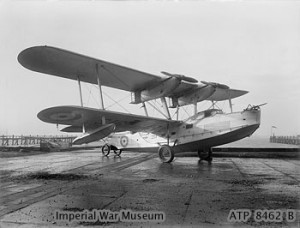
Trials using a Supermarine Scapa flying boat found that the range of the mirror was 21 to 37 miles, with an average of 25 miles, and a bearing error of ±2½ degrees. In contrast, the range of the unaided human ear was put at 5 miles. It was estimated that the mirror would provide a six minute warning of an enemy aircraft approaching Malta at 250 mph.
Unfortunately not all the test were successful, perhaps one of the more embarrassing failures being on 5 February 1936 during a visit by Sir Cyril John Deverell, Chief of the Imperial General Staff. No further mirrors were built on Malta, and the Maghtab mirror was reported to be out of use by 5 May 1937.
Location
In May 2008 I had the chance to make a brief visit visit to Malta, so took the opportunity to track down the mirror.
View Larger Map
From Valletta bus station I caught bus number 55 to the terminus at Gharghur, which takes about 35 minutes. As I got off a little old lady came over to ask me where I was going, as she was slightly concerned that I might be lost. I mentioned the “widna”, and she knew straight away what it was, and kindly took me to see it. A local chap mending a car also knew the way, and I’d suggest the best way of finding the mirror is simply to ask someone (widna is pronounced as it would be English).
A few minutes walk from the town centre, we turned down a small road along the side of a ravine, through the Victoria Lines, and from the brow of the hill had a view across the fields below, with the earth station in the middle (and a humongous landfill site in the distance).
The white satellite dish makes the mirror pretty easy to spot, though binoculars are helpful for a good view. The track runs down to the bottom of the hill, passing a small cave containing a shrine. From the bottom of the hill I found my way to the mirror by trial and error.
Unfortunately my trip then went horribly wrong, when I thought I was on a different main road to the one I was actually on, and I had a long walk along a busy road until I found a bus stop at Salina Bay. A better move would have been to return to Ghargur, or head across to the coastal road and catch a bus to Sliema from there.
Malta has pretty obvious merits as a holiday destination, and absolutely bristles with things of interest to history enthusiasts, and especially fortification anoraks. I can thoroughly recommend the guided tours of the steam-operated gun at Fort Rinella, which somehow managed to entertain a group of women who were simply ticking off the attractions, a chap with technical questions about the control system, and me wanting to know about sound mirrors.
Links and more information
- Photo on the Naxxar local council website.
- Early warning system from the WWII times, Maghtab.
- Maltacom’s Earth station at Maghtab.
- Aerial view.
- Evidence of Malta’s Role in WWII, Maghtab Sound Mirror.
- Maghtab sound mirror, Malta by Paul Wells of the Pillbox Study Group.
- SPTT Wied id-Dis Walk 14th October 2007, Ramblers Association of Malta.
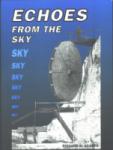 The book Echoes from the Sky by Richard N Scarth devotes two chapters to Malta and the Empire and the Mirror at Maghtab. It is now out of print, but is the definitive work on the subject.
The book Echoes from the Sky by Richard N Scarth devotes two chapters to Malta and the Empire and the Mirror at Maghtab. It is now out of print, but is the definitive work on the subject.- A tour guide at Fort Rinella told me the mirror is mentioned in a book on the Victoria Lines, but unfortunately they’d sold out of copies.

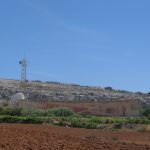
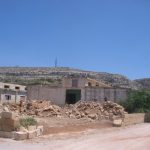
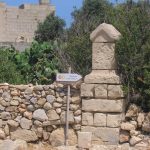
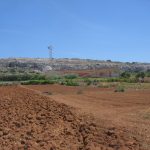
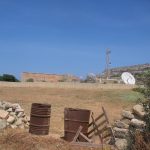
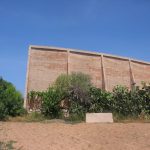
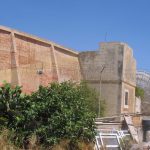
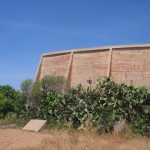
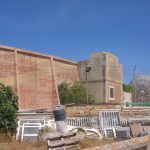
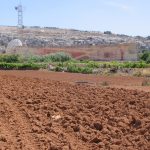
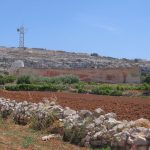
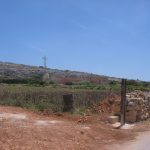
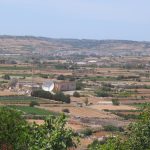
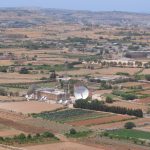







My grandfather built the sound mirrors there in the 1930’s. He was a sergeant major and my mother and my grandmother lived in a sort of caravan (big iron wheels) on site. I think it was in 1936 that my mother and grandmother were evacuated but my father remained. I have a photo of them standing in front of the caravan somewhere. How can I get it to you, if you are interested?
Cheers
Martin
Hi Martin,
Thanks for the info.I am 48 year old Maltese interested in acoustics.
I am glad that we still have this acoustic wall in Malta.
I found out that the wall is 200feet long (around 61m).Do you know
the focal point of this “ear” please or radius of curveture?
Also want to confirm…the 200ft long is along the curve (arc) or direct distance from side to side of the wall (chord)?
Kind Regards,
David Ruggier
@David Ruggier
I suggest using google earth for that .
The details you need are on this link.https://www.mixcloud.com/Kaspaar/denge-sound-mirrors/ I recorded Richard Scarth on the site of the mirrors in Kent. He is an acknowledged expert on the subject.
Can you tell me your opinion on the gun post overlooking Ghajn Tuffieha Bay. Its wall looking North is concave. Could it be that it served as a sound mirror as well? Thanks.